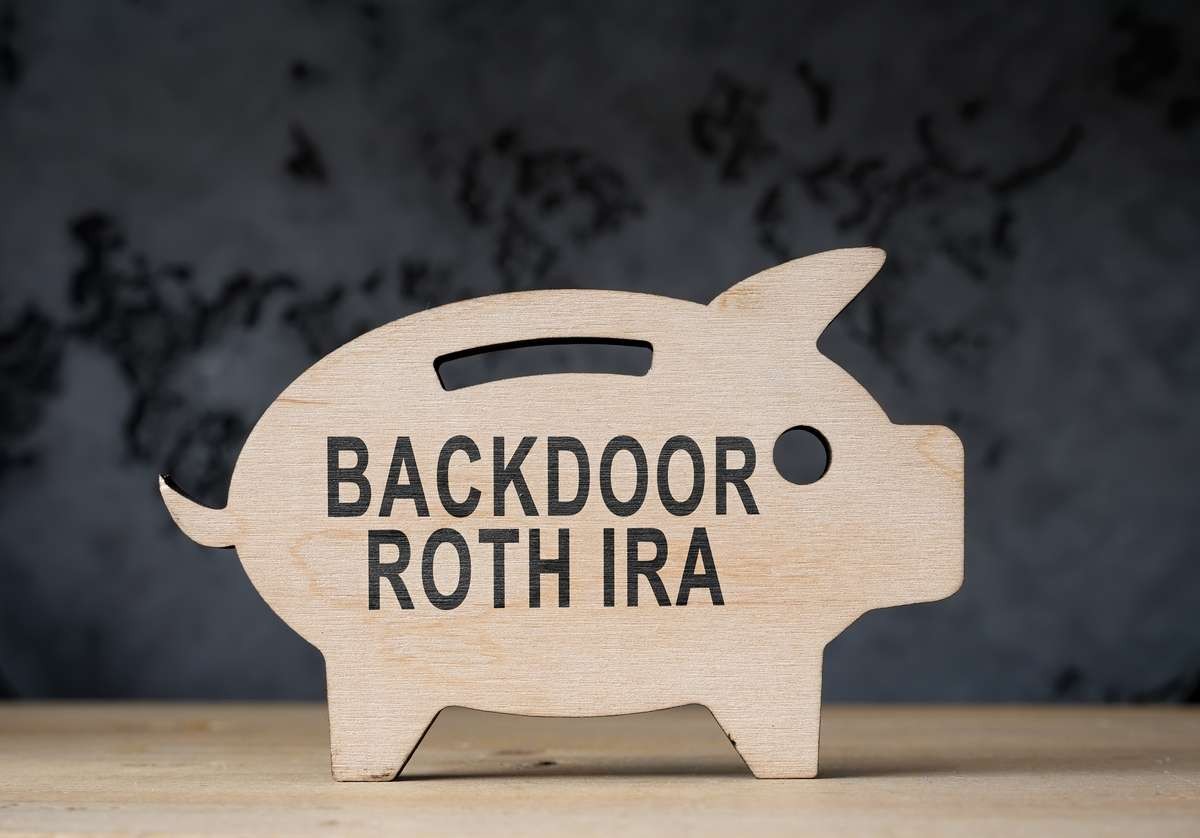In the world of money and saving for the future, there are lots of terms that might sound confusing at first, like "Backdoor Roth IRA." But don't worry! At William Bevins CFP® CTFA, we're here to break things down and make it simple for you. In this article, we're going to chat about the Backdoor Roth IRA. It's a cool trick some smart savers use to boost their retirement funds. But first, let's get to know the basics of a Roth IRA.
"A journey of a thousand miles begins with a single step." - Lao Tzu
To start, the term IRA stands for Individual Retirement Account. An IRA is a type of savings account that comes with tax benefits to incentivize retirement savings. If you're new to this, our article "What is an IRA?" provides a comprehensive look into IRAs, laying out a roadmap for beginners in the investing realm.
Now, let's talk about the Roth. A Roth IRA is a specific type of IRA where you pay taxes upfront on your contributions, but withdrawals in retirement are tax-free. This makes Roth IRAs a powerful tool for those expecting higher tax rates in their retirement years.
To shed more light on this topic, consider reading our piece on "Roth IRA for Retirement Planning". This guide delves into the advantages and potential drawbacks of using Roth IRAs, arming you with the knowledge to make informed financial decisions.
However, there's a catch. High-income earners may find themselves hitting a ceiling when it comes to contributing to a Roth IRA due to the income limits set by the IRS. This is where our topic of interest, the Backdoor Roth IRA, makes a grand entrance.
"In the middle of difficulty lies opportunity." - Albert Einstein
Despite the income limitations on Roth IRAs, there exists a strategy, often referred to as the "Backdoor," that high-income earners can employ to contribute to a Roth IRA. This is not a loophole, but a legitimate method of maximizing your retirement savings.
To comprehend how this backdoor operates, we first need to explore the intricacies of traditional IRA contributions and conversions. Our article "Strategies to Maximize Your IRA Contributions" delves into these strategies, offering you valuable insight into making the most of your contributions.
The essence of the Backdoor Roth IRA strategy lies in the conversion process, where traditional IRA contributions are converted into a Roth IRA. The good news? There are no income limits on IRA conversions, and that's the door high-income earners can open to move their money into a Roth IRA.
In the next part, we'll dive deeper into the conversion process, uncovering the potential benefits and pitfalls along the way. Furthermore, we'll address how this method interacts with the current taxation laws, especially considering the new rules applicable in 2023.
Remember, in the realm of wealth management, knowledge is your compass and strategic planning is your map. Our goal is to ensure you have both. Stay tuned as we continue this journey in part two of our exploration into the Backdoor Roth IRA strategy.
A Deeper Dive: Understanding the Conversion Process and Implications of a Backdoor Roth IRA
Having cleared the initial hurdles in the journey to understanding a Backdoor Roth IRA, we now delve into the mechanics of the conversion process, and the potential benefits and pitfalls that come with it. Remember, the pathway to successful financial planning and wealth management lies in understanding the tools at your disposal and how to use them effectively.
The Conversion Process
The process of a Backdoor Roth IRA conversion involves a few key steps. First, you make a non-deductible contribution to a traditional IRA. Why non-deductible? Simply put, these are contributions made with after-tax dollars, meaning you've already paid taxes on the money you contribute.
Once the contribution is made, you can then convert this traditional IRA into a Roth IRA. Thanks to the Tax Increase Prevention Reconciliation Act of 2005 (TIPRA), this conversion is allowed regardless of income level, hence the "backdoor" for high-income earners to make Roth IRA contributions.
However, this is not a one-size-fits-all strategy. Before embarking on this path, it is crucial to understand the potential implications and the optimal timing for a conversion. For more insights on this, our article "Strategies and Techniques for Effective Wealth Management" provides a broader perspective on various wealth management strategies, including optimal timing for conversions and other techniques to grow your retirement nest egg.
Potential Benefits and Pitfalls
A Backdoor Roth IRA strategy can be a powerful tool to maximize retirement savings for high-income earners. The potential benefits are considerable, including tax-free growth and withdrawals in retirement, no required minimum distributions (RMDs), and the ability to leave a tax-free inheritance to your heirs. These advantages can significantly enhance your retirement income and estate planning goals
But there's a flip side to this coin. As with all financial strategies, there are risks and potential pitfalls to consider. A misstep in the process could lead to unexpected taxes, penalties, and complications. One such concern is the Pro-Rata rule, a tax rule that could potentially limit the benefits of a Backdoor Roth IRA conversion.
"Risk comes from not knowing what you're doing." - Warren Buffet
Furthermore, recent tax law changes in 2023 have added another layer of complexity to Roth IRA conversions. Our piece on "Advantages of Roth IRA Conversions in 2023" elaborates on these changes, guiding you through the new tax landscape.
Another common concern is how much money one needs to retire comfortably. Understanding your retirement goals and knowing how much you'll need can guide you in deciding whether a Backdoor Roth IRA is a worthwhile strategy. You might find our article on "How Much Money Do I Need to Retire?" to be a useful resource in this regard.
As we conclude our exploration of the Backdoor Roth IRA strategy, it is crucial to remember that successful financial planning is a journey, not a destination. There's always more to learn, new strategies to implement, and fresh perspectives to consider.
By equipping yourself with knowledge, you're already on the path to becoming a successful investor. And if you're wondering where to begin, consider checking out our beginner-friendly guide on "How to Start Investing".
Remember, the goal isn't to make complex financial decisions alone but to know enough to make informed decisions and ask the right questions. As you continue to learn, grow, and navigate the world of financial planning and wealth management, know that you're not alone in this journey. At William Bevins, CFP® CTFA we're here to guide and support you every step of the way.
Summing Up: Backdoor Roth IRA as a Strategic Financial Planning Tool
Now that we've walked through the journey of a Backdoor Roth IRA, let's sum it all up. The potential benefits of a Backdoor Roth IRA are clear – it offers tax advantages, provides a pathway for high-income earners to contribute to a Roth IRA, and is an integral part of strategic retirement planning. But it's also a tool that requires careful handling, with potential pitfalls waiting to trip up the unwary investor.
Tailored Strategies for Financial Success
To truly reap the benefits of a Backdoor Roth IRA, it's critical to approach it as part of a broader financial strategy. That's why a comprehensive approach, which considers all aspects of your financial life and long-term goals, can set you on the path to success.
One key aspect of this approach is understanding how to maximize your IRA contributions. For instance, learning about contribution limits, understanding how to take advantage of catch-up contributions if you're over 50, and knowing when to contribute can make a significant difference to your retirement savings. You can find valuable insights on these strategies in our article, "Strategies to Maximize Your IRA Contributions".
The Role of Professional Guidance
Navigating the world of finance, with its complex regulations and a multitude of investment options, can be challenging. Even for the savvy investor, understanding the ins and outs of a strategy like the Backdoor Roth IRA can be daunting. That's where professional guidance comes in.
"The hardest thing in the world to understand is the income tax." - Albert Einstein
The role of a financial advisor isn't just to tell you where to put your money. It's about guiding you to make informed decisions that align with your financial goals and personal values. A financial advisor can provide critical insights into complex financial tools, like the Backdoor Roth IRA, and guide you in integrating these into your broader financial plan.
Wrapping Up
A Backdoor Roth IRA can be a highly effective tool for retirement planning, especially for high-income earners. But it's not a one-size-fits-all solution. It requires a clear understanding of your financial picture, comprehensive financial planning, and potentially, the guidance of a financial advisor.
At William Bevins, our goal is to provide the knowledge and guidance you need to make informed financial decisions. From starting your investing journey to understanding complex strategies like the Backdoor Roth IRA, we're here to support you every step of the way.
Keep learning, keep investing, and remember, the journey to financial success is a marathon, not a sprint. You've already taken the first step by educating yourself about a Backdoor Roth IRA. Keep moving forward, and you'll be well on your way to achieving your financial goals.
About William Bevins CFP® CTFA
William Bevins has spent a career in finance, investing, and advice. Today, William serves as a fiduciary advisor offering clients of all economic backgrounds help with investing, wealth creation, retirement planning, and more. Reach William at his email address - [email protected] or visit his website WilliamBevins.com.




